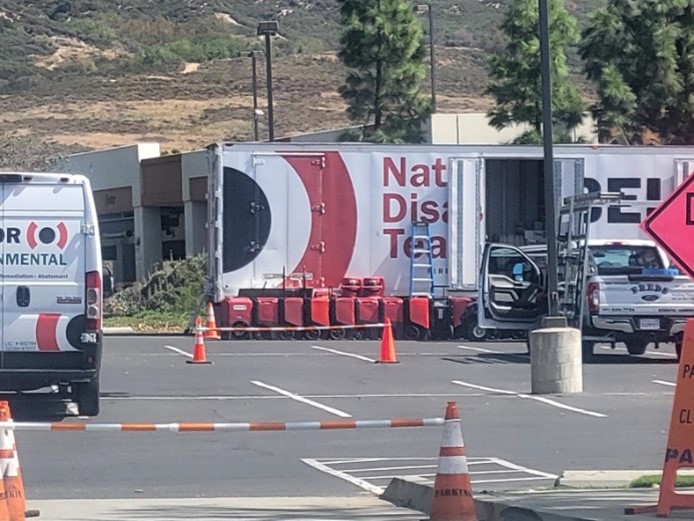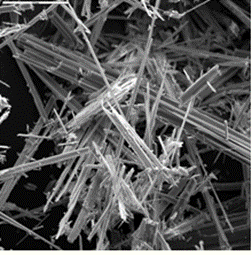CSUSB Flood Remediation
On September 11th, CSUSB became one of several areas in San Bernardino County that sustained damage to its facilities due to heavy rainfall. Tropical Storm Kay brought record rainfall to Southern California which caused flash flood warnings for many. More than 2” of rain fell in less than 1 hour on the San Bernardino campus which overwhelmed the university’s stormwater drainage systems, causing significant damage. As soon as the campus’ emergency response team was notified of significant flooding, third party vendors arrived at CSUSB that same evening to begin water removal of impacted areas on campus.

Campus Impact Identification & Water Removal
As a result of a third-party inspection of all campus buildings, over 18 buildings were identified as being impacted by flood water intrusion ranging from leaky ceilings to stormwater that did not subside quickly enough.
Partnering with key vendors and campus response teams, water removal and the drying of affected areas was the first step in the flood remediation process. More than 200 contractors, staff, and volunteers have been working around the clock to help identify impacted areas, remove water, move displaced offices and begin the first phase in the flood remediation process: separation wet areas from dry areas.
By separating airspace between these areas, the wet areas can be dried out more effectively, and efficiently. Campus buildings are equipped with MERV-13 air filters which are medical-grade air filters and are suitable for filtering out large particles like dust, dander, spores, as well as small particulate matter, and even viruses.
Sampling of Hazardous Materials
Campus facilities that sustained damage are scheduled to undergo reconstruction. However, before removal of drywall, flooring (tiles), and building materials can begin, contractors conduct a thorough assessment of impacted areas to identify if asbestos containing materials (ACM) and mold are present. The presence of wet materials does not equate to the presence of asbestos and asbestos does not become hazardous simply by becoming wet. Asbestos fibers are hazardous only when they become airborne due to damage or being physically disturbed.
If asbestos is present, all abatement requirements (process of removing asbestos) and regulatory notifications will be in place, including full containment and isolated air systems.
Mold growth can occur if areas are not dried efficiently, typically within the first 48 hours. CSUSB personnel were extremely diligent in removing thousands of gallons of water in the first 24 hours and many areas are already dry. Additionally, the contractor has deployed machines throughout the campus to dry affected spaces. All affected areas will be assessed by EH&S before they are cleared for building occupants to return.

What can you do?
We rely on our campus community to ensure that the flood remediation procedure continues to be a safe and effective process. Even if your area was not directly impacted, there are still a few things that you can do to continue to support and promote a safe working and learning environment at CSUSB.
Stay out of impacted buildings and areas on campus
Follow posted building signage and remain out of areas that were impacted by stormwater flooding. Identified areas of impact on campus have become designated construction zones so that vendors can conduct air monitoring, sampling and prepare for reconstruction. These spaces are no longer safe for employees and students to enter without proper authorization and approval. Some buildings may have floors that were sectioned off to separate wet and dry spaces. Because of this, it’s possible that employees can continue to work in some areas that are dry while construction work can take place in other areas.
Know where to get information
Many concerns and questions may be answered by reviewing the Flood Remediation and/or Asbestos Abatement frequently asked questions posted on the Environmental Health & Safety (EHS) website. Additionally, inquires may be sent to ehs@csusb.edu.
Contribute to the FAQs by emailing ehs@csusb.edu
We invite our colleagues to share additional information to be considered for publication on the Flood Remediation or Asbestos Abatement FAQs.
Tell your colleague about the EHS resources on the website
If your colleague or a student comes to you with questions regarding the flood remediation process, direct them to the EHS website.
What’s next?
The campus continues to move forward through the flood remediation process and anticipates reconstruction of identified buildings to take place soon. Through close work with our contractors, colleagues, and peers, some areas will be back online very quickly. However, some areas on campus that were more significantly impacted may be offline until the end of the academic year. More than 200 contractors, staff, and volunteers are working around the clock to restore campus according to Environmental Protection Agency (EPA) guidelines. To stay updated on information as it relates to the flood remediation process, review the below resources, or reach out to ehs@csusb.edu.
Resources
- Asbestos on Campus: General campus information regarding ACM present on campus
- Asbestos FAQs: Frequently asked questions regarding the abatement of asbestos on campus
- Flood Remediation FAQs: Frequently asked questions regarding the flood remediation process at CSUSB
- Sampling Log Reports: Reports of sampling conducted by contractors of areas and materials damaged. Note preliminary reports are added and will be updated as they become available.